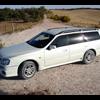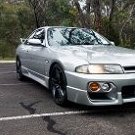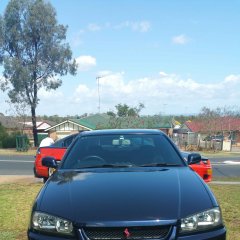Announcements
-
Similar Content
-
Latest Posts
-
Ahh... it's an early RE5R01A box, that means the pinouts I gave are wrong (they were for the RE4R01A 4-speed box)... I'll have to dig around in my docs to see if I've got that schematic (they used the same gearbox plug, with the vacant pin wired to the direct drive clutch solenoid)...prolly hidden away in a supplement somewhere... ...there were 3 variants of the RE5R01A ~ this early schema was what we called the 'dumb' 5 speed ; it's what jatco called a 'medium duty' box, with torque holding up roughly ~200ft/lbs or so, which was good for NA from RB20/25DE and up to around VG30 output spec. With the RB25DET (and VG33/35 mills), the only options they had was the 4-speed 4AX00 box, which had been beefed up to handle the extra torque (primarily for the VG35, but it also suited the RB25DET mill and others)...and the RE4R03 box in large 4WDs a lot of the time... ...the next variant of 5-speed was redesigned, stronger, and 'smart'...first ones had external TCU with internal (on valvebody) Shift Control Unit, pressure switches, and 2 x TSS...and the last ones had internal TCU+SCU setup, with CANbus control etc etc. @DRoc81 On the RHS of the box towards the rear, there should be a stamped silver ID tag -- what's the model number? Oh...and with the early 5-speeds, the torque converter control solenoid assembly should be replaced as well (31940-60X00)...it's a bit Murphy's Law ....if one has failed, bet on the rest not being far behind ...
-
By Dose Pipe Sutututu · Posted
I remembered wrong, but was close though 1Kz setting because those Jaycar SSRs don't go any faster, 1x pump per SSR with flyback diodes & heatsinks. In saying that, the heatsinks are overkill. Just on an alloy plate is more than sufficient. You'll find without a flyback diode, your SSRs will heat up big time and also die prematurely. I've been running the two same SSRs since the last motor, no issues, car does 2 hour straight drives in summer once in a while and gets punished on the track. Nothing melts, no hot messes, etc. -
Hmm. You're probably best off working out what the lobe centreline or even the LSA is for the stock cams, with VCT OFF. That's bound to be out there somewhere. Then, work on the assumption that the Kelford centreline is probably the same, and wouldn't be more than a couple of degrees away, if it is different at all. I'm very surprised that you needed to adjust the exhaust cam by 5° to get it on spec. That screams there's another problem somewhere. Anything from the belt being 1 tooth off (how many degrees is one tooth worth?) to simple user/measurement error on the degree wheel. I say this because Kelford, like most quality cam manufacturers these days, does a pretty good job of actually making the cams to spec, not relying on patching it up afterwards like we had to do back in the 80s.
-
By TurboTapin · Posted
Besides packing it, you can also fill your pump through the oil filter inlet port. After cranking for what felt like an eternity without pressure, i fed a tube in through there and filled it with oil. Cranked for a few seconds after that and had pressure.






Recommended Posts
Create an account or sign in to comment
You need to be a member in order to leave a comment
Create an account
Sign up for a new account in our community. It's easy!
Register a new accountSign in
Already have an account? Sign in here.
Sign In Now